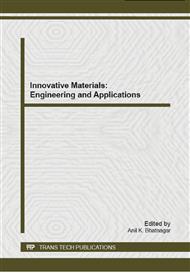p.86
p.91
p.97
p.101
p.109
p.115
p.120
p.127
p.132
Two-Step Annealing for Solution-Based Metal Induced Crystallization of Amorphous Silicon Films
Abstract:
Solution-based nickel (Ni)-induced crystallization (S-MIC) of amorphous silicon (a-Si) films has been studied with a two-step annealing process. We especially introduced Ethyl cellulose (EC) into the Ni-salt solution, so the viscous Ni-salt solution can be uniformly spin-coated on the a-Si film prepared by plasma enhanced chemical vapor deposition (PECVD). The annealing temperature can be first set from room temperature (RT) to 400°C and kept at 400°C for 2 h in nitrogen ambience. And then, it is increased from 500°C to 550°C and kept for several hours in the following annealing. The correlations among crystallization, the concentrations of Ni-salt solution and annealing conditions can be discussed. The experimental results show that with the help of the two-step annealing, the a-Si films can be crystallized at a low temperature of 500°C. The crystalline fraction gets up to 81.2% after annealing at 520°C for 2 h and the grain size of the polycrystalline Si film is approximately 0.2 μm. Energy dispersive spectroscopy (EDS) analysis shows that very little Ni metal atoms reside in the crystallized Si film for S-MIC.
Info:
Periodical:
Pages:
109-114
Citation:
Online since:
October 2014
Authors:
Price:
Сopyright:
© 2014 Trans Tech Publications Ltd. All Rights Reserved
Share:
Citation:


